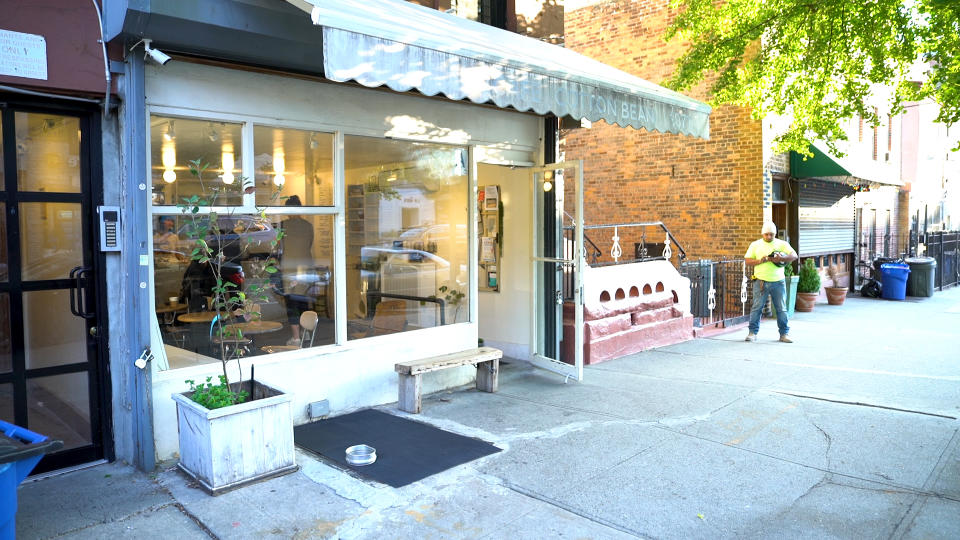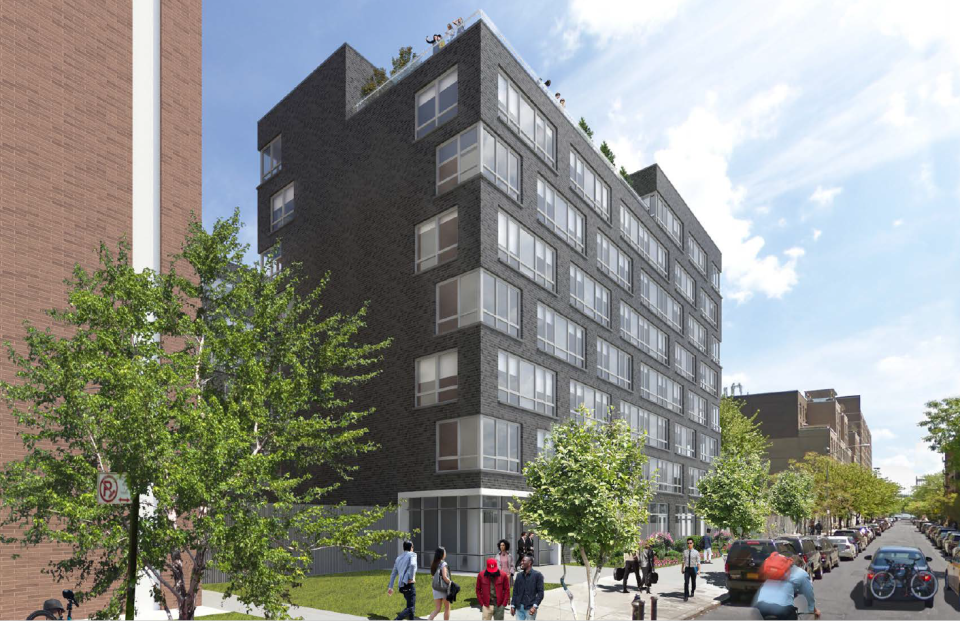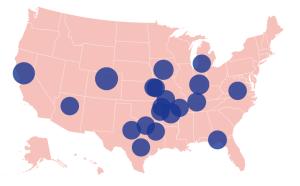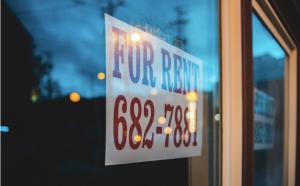Co-living: What I learned about the future of housing after a night in a millennial co-habitat
Smart TVs, smart locks, and smart beds — that’s only the beginning of what you can find in co-living spaces.
For those wondering what exactly is co-living, I thought the same. Like any millennial or Gen Zer would do, I googled it. But its definition was still hard to pin down.
Co-living startup Roomrs called it “anything but your typical rental experience,” while Venn said co-living is “everything you need for better city living...no-fee apartments with a transparent application process, headache-free move-in, open coworking and event spaces — all included in your rent.”
One theme ran throughout the offerings. All co-living companies had a similar mission: To provide lower-income housing for students and young professionals in major global cities, including New York, San Francisco, Berlin, Tel Aviv, London, and beyond.
However, it’s one thing to read about co-living — it’s totally different to experience it. And that’s how I found myself in a Roomrs’ apartment in Crown Heights, Brooklyn, for just one night. It was a chilly, crisp autumn Friday when I moved into the top-floor apartment of a restored landmark building and met Roomer CEO Or Goldschmidt.

First impression of co-living
Before settling in, I dropped off my stuff and checked out the neighborhood. It was a five-minute walk to the local bus stop, Long Island Rail Road, a few local grocery stores, a sushi restaurant, and nail salon; it was also a short distance to the nearest subway and Blink Fitness.
The surrounding area was loud, diverse, and vibrant. The area felt safe and welcoming, with plenty of patrol cars and a SMARTair lock on my front door. After picking up ingredients at the local grocery store to make a salad for dinner, it was time to see the apartment and meet my roommates.

To open the lock, I needed to use an app on my phone or enter a passcode at both the building entrance and at my apartment door. While the lock worked at the entrance to my apartment building, I had trouble getting it to work on my apartment door. Luckily, my roommates for the night let me in.
The apartment was by no means the stereotypical “shoebox” New Yorkers often encounter. The three-bedroom, two-bathroom apartment very comfortably fit three people, including me, my two roommates, and the one guest my roommates had over.
The apartment was fully furnished, including a smart TV, couch, and coffee table in the living room. The kitchen was outfitted with pots and pans, and my bedroom featured a full-size bed with clean sheets and blankets and a ‘smart’ mattress that can track your sleep patterns. Other furnishings included bath towels, a nightstand, desk, and eight clothes hangers — enough for a short stay, but certainly not for the long term.

For the night, I lived with two twenty-somethings. The woman is living in New York for her medical residency, while the young man was a full-time employee. They chose to live in a co-living space because of the flexible lease, the convenience of not finding roommates or furniture, and its central location.
While I was not allowed to choose my roommates, they were both kind and neighborly. If I moved in long term, I couldn’t choose my roommates either. I also couldn’t meet who lived in the apartment before moving in. The only way I could choose is if I applied with a friend to live together and there were two vacant rooms. However, Goldschmidt said if I was unhappy, Roomers can accommodate a move.
The price of co-living
Goldschidmt told Cashay that the average price per room across all properties is $1,500 a month. The rent also includes Wi-Fi, utilities, laundry services in the basement, and a monthly housekeeping service for the shared space.
Goldschmidt said Roomrs could turn an apartment around for new residents within 24 hours. To live at a Roomrs apartment, I would have to rent the bedroom for at least three months.
My bedroom — the smallest of the three — would cost $1,400 a month. My roommates, who both signed year-long leases, paid $1,600 and $1,725 — which included an in-room bathroom — for their larger bedrooms.

I figured a co-living space would be cheaper than traditional options. But it turns out I would likely pay more for this particular space. The total combined rent was $4,725, more than the average rental price of $3,727 for a three-bedroom in Crown Heights, according to Jonathan Miller, president and CEO of New York-based appraisal firm Miller Samuel, told Cashay.
Goldschmidt said that renters must follow local and state rent laws — despite rumors to the contrary — since Roomrs essentially “manages real estate on behalf of the landlords.”
This may mean ensuring a lease guarantor if a renter doesn’t make 40 times the monthly rent. This may sound scary, especially if you’re moving from out of town on your own, but co-living companies are willing to help.
“You do need to meet certain financial requirements,” Goldschmidt said. “We're more flexible and we're using other services, such as alternative security deposits, when people cannot have some sort of a guarantor.”
Additional perks of co-living
The price tag was a bit lofty for this girl, who currently lives in an apartment in uptown Manhattan. However, my roommates believed that the perks that came with the apartment were well worth it. Roomrs does take care of nearly everything for you.
Roomrs pledges to take care of any apartment issues quickly – broken sink, malfunctioning key, mouse in the house — when residents reach out via the app. Other landlords may not be as timely.
It’s especially important to reiterate that furniture is included if you’re moving from out of town. This is a huge cost savings. On average, you’ll shell out nearly $7,700 to furnish a new apartment.

The biggest perk, in my opinion, is the roommate guarantee. If a roommate moves out, Roomrs is responsible for finding another roommate because, remember, you’re essentially only renting out the room.
This can save you a ton of time and worry. Just think, you won’t have to search the local Facebook rental group or download apps to find a roommate and then go on numerous roommate dates, only to realize the roommate you chose is actually disgustingly messy even though they described themselves as a neat freak. We’ve all been there.
‘Where loneliness can be resolved’
Despite the downfall of WeWork, Goldschmidt is confident that Roomrs will succeed. He said the company broke even last year. The company only has 15 employees, but oversees 350 rooms with over 90% occupancy.
Goldschmidt isn’t the only person who believes in the concept.
Cashay caught up with Chen Avni, chief experience officer of Venn, another co-living company. He founded the startup in 2016 with two friends. It started in Tel Aviv, moved to Berlin and, in 2018, debuted in its third city: New York.
Overall the company has 40 buildings worldwide, with 20 in New York and major plans for more. In addition to offering a co-living option, Avni is dreaming bigger and creating a co-living neighborhood.

“We call ourselves a neighboring company,” Avni said. “We are not looking at [just] a coworking space or residential building or even a local business as they're just a component of something much bigger and holistic.”
As Venn expands throughout Bushwick in Brooklyn, the company hopes to solve the increasing “level of loneliness.” A 2018 survey from the health services company Cigna found that nearly half of Americans sometimes or always feel alone, while a similar share feels left out.
To encourage interaction, Venn is building a community lounge and a coffee shop, with plans to tap a local business to operate it. Both will be open to the entire community.
“We believe...those are the places where the magic happens, where loneliness can be resolved.” Avni said. “That's the reason that we are trying to take our community members and the neighborhood out from their homes to shared spaces in the neighborhood.”
Future of affordable housing?
Local governments are turning to co-living as one way to battle the high cost of housing. For instance, New York’s Department of Housing Preservation and Development recently announced a pilot program to develop affordable co-living buildings to solve “a really severe affordability crisis,” Leila Bozorg, the deputy commissioner for neighborhood strategies at HPD told Cashay.
“We put incentives into the program to make sure that at the end of that 60 years, we can renew affordability,” Borzorg said. “Most of our tenants are paying no more than 30% of their income on rent, and that's what we aim to ensure to be the case for the entirety of their tenancy.”
The department plans to open three co-living spaces by 2025.

The first, larger building is in partnership with the co-living company, Common, and L+M Development Partners. It’s slated to have 200 units.
The second project is to build 36 housing opportunities with Ascendant Neighborhood Developers and the Ali Forney Center. Bozorg said the project plans to focus a lot of its outreach on homeless youth.
The third project is in East New York. The department is working with Cypress Hills Local Development Corp. to offer 11 housing opportunities for low-income households.
“The reality is that in a city like New York, we do actually have a shortage of small units for people who are single or couples who are looking for apartments,” Bozorg said. “We need to try to relaunch and relook at whether shared housing and co-living can be part of the solution.”
This is a special report for Cashay by Brooke DiPalma, an associate producer at Yahoo Finance.
Read more information and tips our Housing section
Read more personal finance information, news, and tips on Cashay





